Ian M. Sullivan
In its quest to become the predominant nation in the world, China is creating an armed capability to defeat the United States regionally and eventually globally. China’s military modernization covers every part of doctrine, organization, training, materiel, leadership and education, personnel, facilities, and policy, or DOTMLPF-P.
Published January-February 2024
Download the PDF 
Capt. Scott J. Tosi, U.S. Army Reserve
China is making great efforts to downsize, professionalize, restructure existing command relationships, and enable joint operations within the People’s Liberation Army.
Published September-October 2023
Download the PDF 
Capt. Elianna Esau, U.S. Army
Chinese influence in Africa has helped it dominate the field of the rare minerals and rare earth elements that are critical for producing clean energy and defense technology. As the United States prioritizes national security through clean energy options, it must address China’s outsized influence in Africa through comprehensive and integrated strategies to mitigate the risks of current power dynamics.
Published September 2023
Download the PDF 
Finding Success in Failure?
Edward A. Lynch, PhD
The Chinese have significant global objectives in mind, specifically to change the international system, and the Belt and Road Initiative projects can contribute to those objectives whether these projects achieve their stated goals.
Published May-June 2023
Download the PDF 
A Backgrounder
Geoff Babb
The writings of Sun Tzu (Sunzi) and Mao Tse-tung (Mao Zedong) are a useful place to start any examination of the concept of a Chinese Way of War. The Lionel Giles translation of Sunzi’s Art of War argues that it is “the world’s oldest treatise on war.” In 1872, in the time of Napoleon, a Jesuit priest brought back a translation to France. Today, it widely read and studied among America’s allies, friends, and potential enemies in the USINDOPACOM. Sunzi’s thirteen chapters, characterized in an introduction by General (Ret.) David C. Petraeus to a new translation, as “a mixture of poetic and pragmatic,” provides the foundation for the study of a distinct Chinese Way of War.
Published March 2023
Download the PDF 
A Closer Look at Japan
Maj. Richard M. Pazdzierski, U.S. Army
Japan’s political culture surrounding military bases and exercises have affected the security aspects of the U.S.-Japan alliance for many decades and will likely have a significant impact on the Army’s ability to train, fight, and win with long-range precision strike capabilities intended to deploy to Japan.
Published in the July-August 2021 Edition of Military Review, p 31
Download the PDF 
Strategy, Armament, and Disposition
Maj. Christopher J. Mihal, PMP
The People’s Liberation Army Rocket Force is perhaps China’s most valuable current military asset as it provides China both offensive and defensive capabilities against a wide range of opponents as well as the inherent value of deterrence that nuclear weapons provide any nation.
Published in the July-August 2021 Edition of Military Review, p 16
Download the PDF 
Lt. Cmdr. James M. Landreth, U.S. Navy
A naval officer discusses why China’s massive fishing fleet should be closely monitored by military planners because of its harmful activities below the threshold of conflict and its potential use as a paramilitary force.
Published in the May-June 2021 Edition of Military Review, p 32
Download the PDF 
Relevant but Not a Tripwire
Maj. John Q. Bolton, U.S. Army
The author believes basing U.S. forces on Taiwan would inflame tensions with China without gaining advantage. He cautions against overestimating China’s capabilities, but he acknowledges the unique capabilities landpower brings to operations in the Indo-Pacific.
Published in the May-June 2021 Edition of Military Review, p 22
Download the PDF 
Marine Corps Support to Joint Operations in Contested Littorals
Gen. David H. Berger, U.S. Marine Corps
A former U.S. diplomat examines how time horizons—taking a short-term or a long-term view toward goal achievement—have influenced the U.S.-China relationship and how they might affect both countries’ decision-making regarding potential actions to seize Taiwan.
Published in the May-June 2021 Edition of Military Review, p 6
Download the PDF 
A Primer for Operational Staffs and Tactical Leaders
Shuxian Luo
Jonathan G. Panter
A former U.S. diplomat examines how time horizons—taking a short-term or a long-term view toward goal achievement—have influenced the U.S.-China relationship and how they might affect both countries’ decision-making regarding potential actions to seize Taiwan.
Published in the January-February 2021 Edition of Military Review, p 6
Download the PDF 
Creating Anti-Access Challenges in the Indo-Pacific
Maj. Robert F. Gold, U.S. Army
A former U.S. diplomat examines how time horizons—taking a short-term or a long-term view toward goal achievement—have influenced the U.S.-China relationship and how they might affect both countries’ decision-making regarding potential actions to seize Taiwan.
Published in the November-December 2020 Edition of Military Review, p 101
Download the PDF 
New Opportunities amid Increasing Threats
Eric Setzekorn, PhD
The author discusses how the evolving security situation in the Taiwan Strait offers the U.S. Army a chance to play an important role in deterring Chinese military action and strengthening American strategic connections in East Asia.
Published in the September-Octobe 2020 Edition of Military Review, p 44
Download the PDF 
Linda Zhang
The author describes how the People’s Republic of China’s malign influence in Taiwan’s traditional media and its ability to spread propaganda and disinformation on social media threatens Taiwan’s press freedom and democratic process.
Published in the September-October 2020 Edition of Military Review, p 21
Download the PDF 
David An
A former U.S. diplomat examines how time horizons—taking a short-term or a long-term view toward goal achievement—have influenced the U.S.-China relationship and how they might affect both countries’ decision-making regarding potential actions to seize Taiwan.
Published in the September-October 2020 Edition of Military Review, p 10
Download the PDF 
China’s Financial Alternative to Military Reunification with Taiwan
1st Lt. Bethany G. Russell, U.S. Army
China is more likely to use economic means rather than military force to pressure Taiwan into reunification, according to this author. China can be expected to use its economic leverage to disrupt markets and implement sanctions to compel the island to agree to annexation for the sake of its economic survival.
Published in the September-October 2020 Edition of Military Review, p 33
Download the PDF 
Returning U.S. Forces to Taiwan
Capt. Walker D. Mills, U.S. Marine Corps
A U.S. marine opines that if the United States wants to maintain credible conventional deterrence against a People’s Liberation Army attack on Taiwan, it needs to consider basing troops in Taiwan.
Published in the September-October 2020 Edition of Military Review, p 55
Download the PDF 
Brian J. Dunn
An Army corps will be indispensable and must be fully incorporated into U.S. Indo-Pacific Command’s Taiwan contingency plans. The author espouses an aggressive offensive military response to a potential Chinese attack into Taiwan.
Published in the September-October 2020 Edition of Military Review, p 68
Download the PDF 
A Generational Approach to Achieving the People’s Republic of China Strategic Objective to Annex Taiwan
Military Review Staff
Editor's commentary on the political dimension of the long-term generational approach the People's Republic of China has taken in its decades-old political effort to strip away all diplomatic recognition of Taiwan and support from the world community of nations as a preparatory phase for possible invasion and annexation of the island.
Published in the September-October 2020 Edition of Military Review, p 161
Download the PDF 
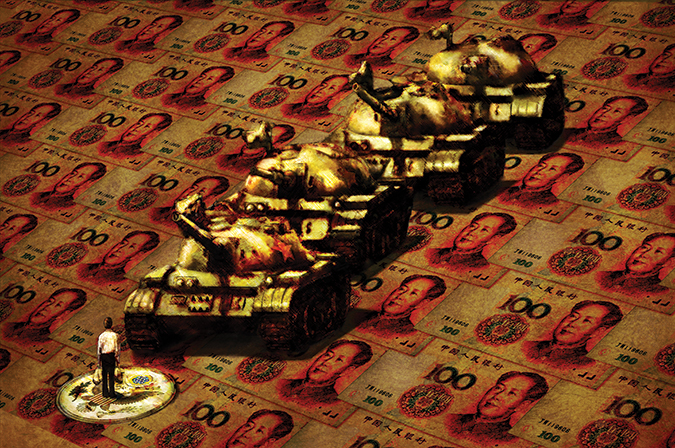
Capabilities and Limitations of Evolving Institutional Power
Lt. Johnathan D. Falcone, U.S. Navy
The battlespace in modern warfare has expanded to the economic domain. According to the author, it is strategically necessary for the United States and the Federal Reserve to maintain influence over and leadership of the international financial system.
Published in the July-August 2020 Edition of Military Review, p 68
Download the PDF 
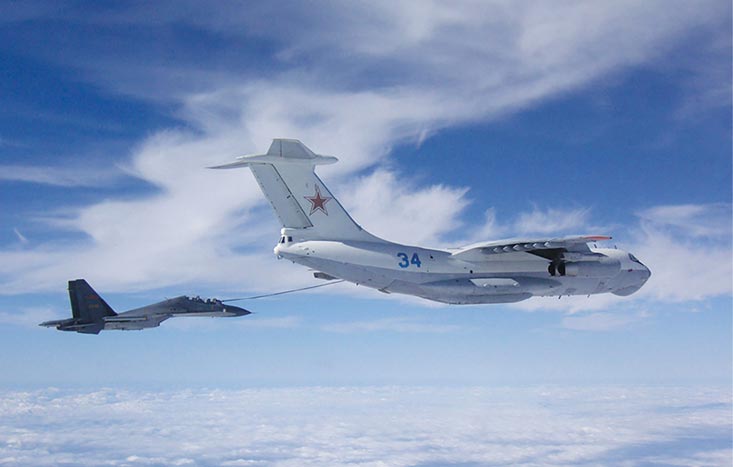
Are the Chinese Ready?
Maj. Jonathan G. McPhilamy, U.S. Air Force
An Air Force officer explains that while China has invested heavily in its defensive air capabilities, it still lags significantly behind the West in three areas important for offensive airpower projection: air integration in the joint fight, aerial refueling, and aircraft production and sustainment.
Published in the January-February 2020 Edition of Military Review, p 56
Download the PDF 
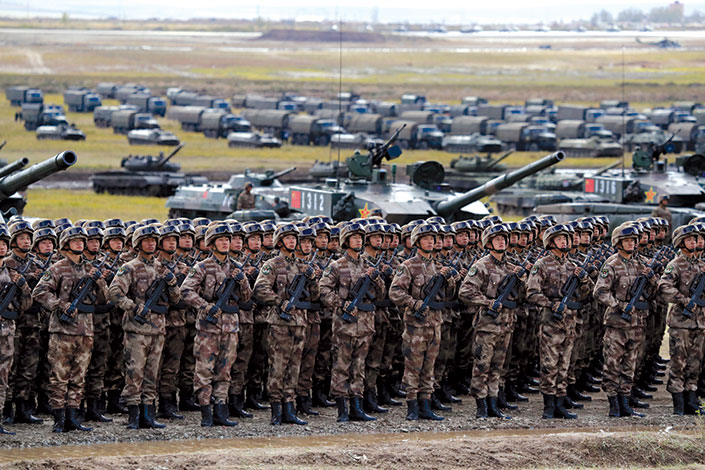
By Gen. Robert B. Brown, U.S. Army
Lt. Col. R. Blake Lackey, U.S. Army
Maj. Brian G. Forester, U.S. Army
The commander of U.S. Army Pacific discusses China and the role of the Army in dealing with Chinese activities in the Pacific theater.
Published in the September-October 2019 Edition of Military Review, p 35
Download the PDF 
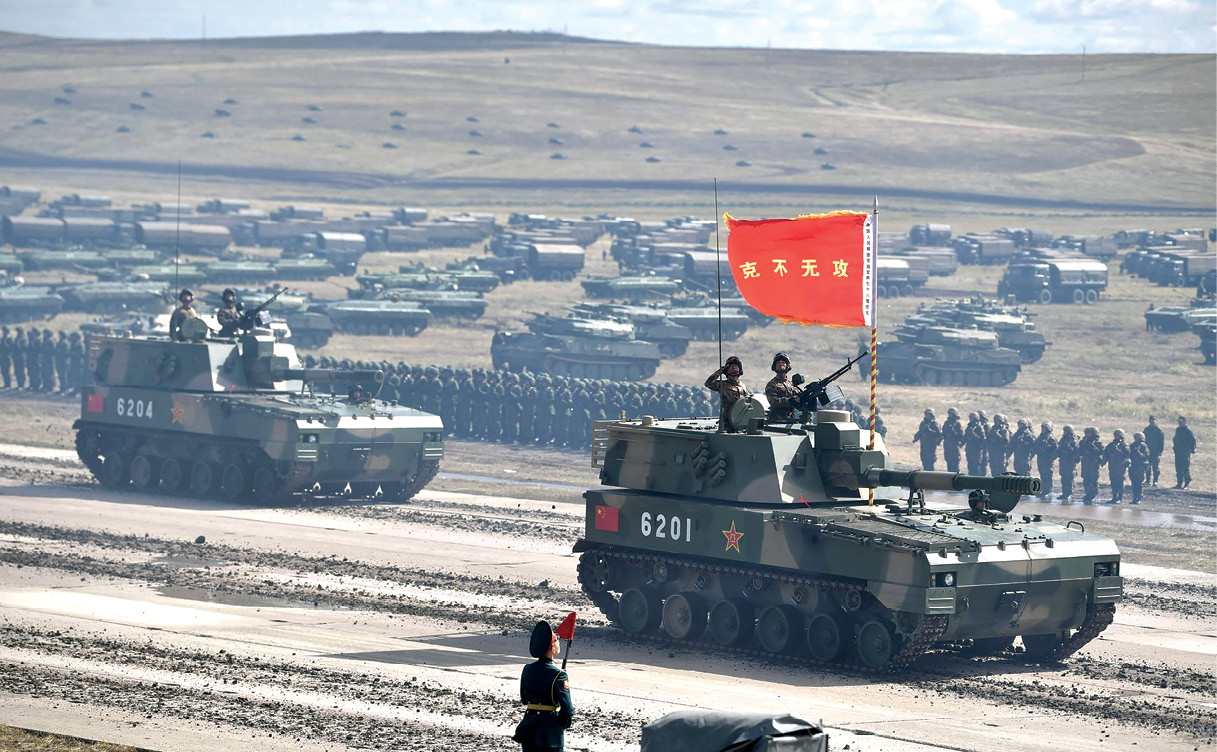
In Conflict, Not Competition
By Timothy L. Faulkner
We must not misunderstand the Chinese approach to warfare, according to this senior intelligence officer. The conflict China is waging with the United States has put it in a positional advantage that, if left unchecked, will allow it to dominate in terms of diplomatic, intelligence, military, and economic power by 2050.
Published in the September-October 2019 Edition of Military Review, p 42
Download the PDF 

By Kimberly Orinx
Tanguy Struye de Swielande, PhD
Two scholars contrast the differences in the use of cyber power between the United States and China.
Published in the September-October 2019 Edition of Military Review, p 58
Download the PDF 
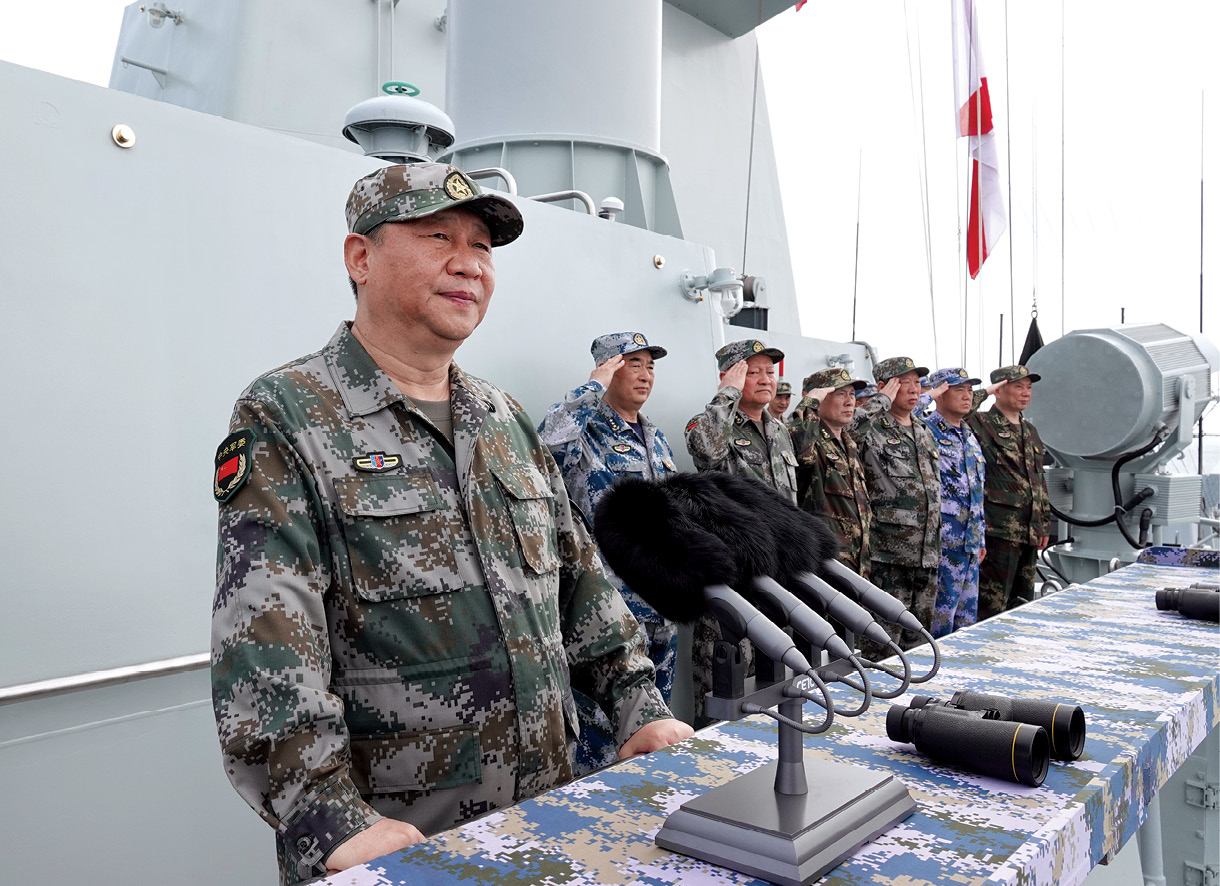
Problematizing China’s Hundred-Year Strategy toward Great-Power Status
By Axel Dessein
A critique of Michael Pillsbury’s thesis as developed in the book Hundred Year Marathon regarding the assertion that China is conducting a full-scale effort (across all elements of power to include the military) to assert dominance over the United States and Western powers and achieve the status of unipolar hegemonic power of the globe.
Published in the September-October 2019 Edition of Military Review, p 68
Download the PDF 
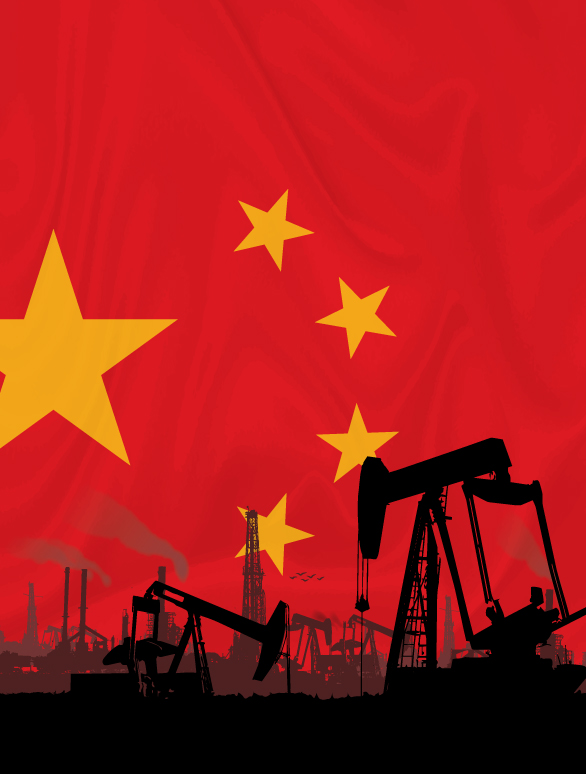
Oil and the Creation of a Chinese Empire in the Twentieth and Twenty-First Centuries
By Capt. Philip Murray, U.S. Army
The author argues that in China’s rise to economic and political influence, it is behaving in a manner little different from any other historical example of a great power’s expansion of economic power and influence.
Published in the September-October 2019 Edition of Military Review, p 85
Download the PDF 
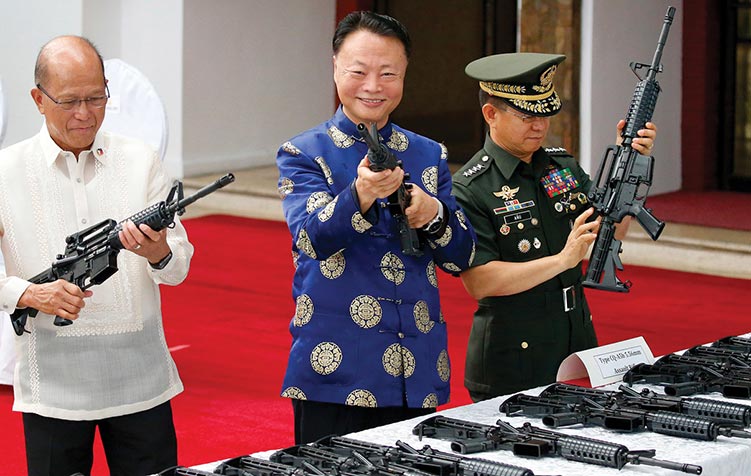
An Overlooked Aspect of Connectivity and Cooperation?
By Capt. James Daniel, U.S. Army
The author discusses China’s efforts to rebuild international trade routes, establish a global network of ports, and proceed with other initiatives aimed at making China the centrifugal economic power of the world. He details the linkages between those activities and China’s parallel involvement in the international weapons trade.
Published in the September-October 2019 Edition of Military Review, p 96
Download the PDF 
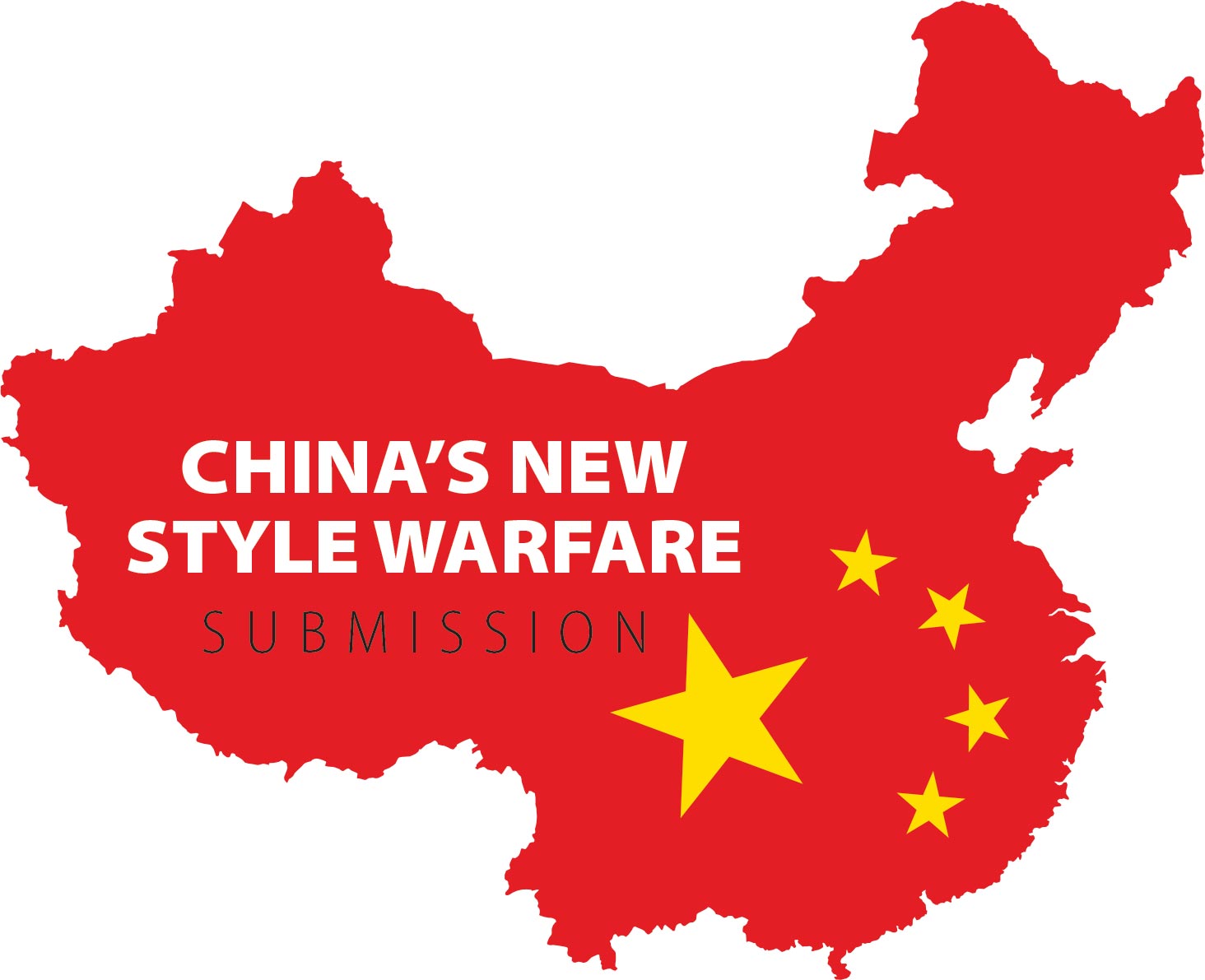
Addressing Chinese Exploitation of U.S. Education Systems
By Amanda Goyeneche Theus
Master Sgt. Robert Theus, U.S. Army
Advancements spawned in U.S. academia are targeted by the Chinese, who see their procurement by any means as a shortcut to catching up with U.S. technology. The authors recommend U.S. academic institutions apply lessons learned by the military to safeguard intellectual property.
Publishedin Military Review Online Exclusive, August 2019
Download the PDF 
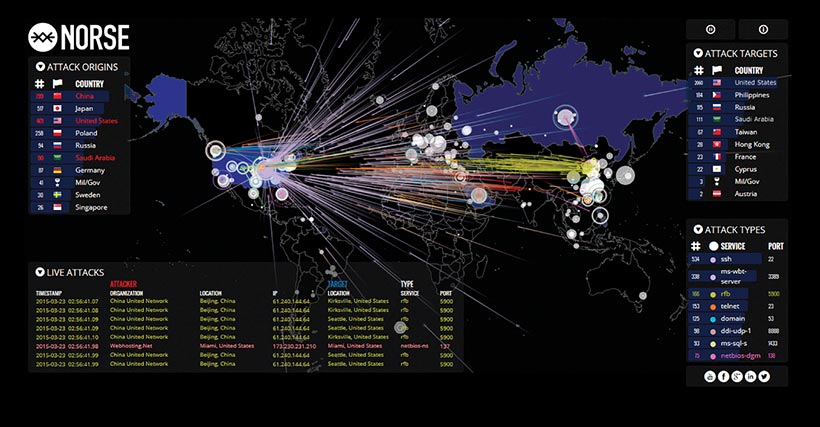
Col. John F. Troxell, U.S. Army, Retired
The author offers a detailed discourse on the importance of geoeconomics, specifically as it applies to competition between China and the United States, based on a review of War by Other Means: Geoeconomics and Statecraft by Robert D. Blackwill and Jennifer M. Harris
Published in the January-February 2018 Edition of Military Review, p 4.
Download the PDF 
Lt. Cmdr. Cindy Hurst, U.S. Navy, Retired
The changing international arena is forcing China to rethink its strategies. The author discusses why that country sees its increasing use of its military overseas as a necessity to protect its citizens and business interests.
Published in the Nov-Dec 2017 Edition of Military Review, p 28.
Download the PDF 
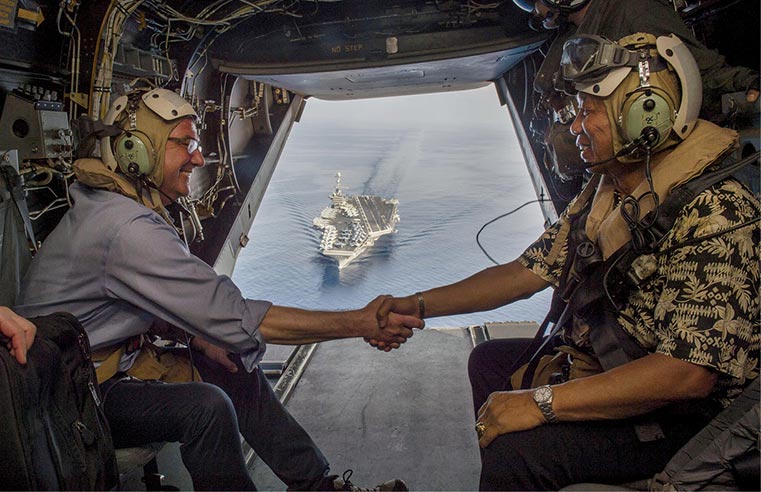
Developments in the Hemisphere
Col. Michael J. Forsyth, U.S. Army
The author compares inaccurate perceptions of modern Chinese leaders to those of pre-World War I German leaders who thought their neighbors were trying to contain them. The delusions of German leaders led to war. U.S. policy toward China should demonstrate that the United States is not trying to contain China in order to avoid conflict.
Published in the July-August 2016 Edition of Military Review, p 95.
Download the PDF 
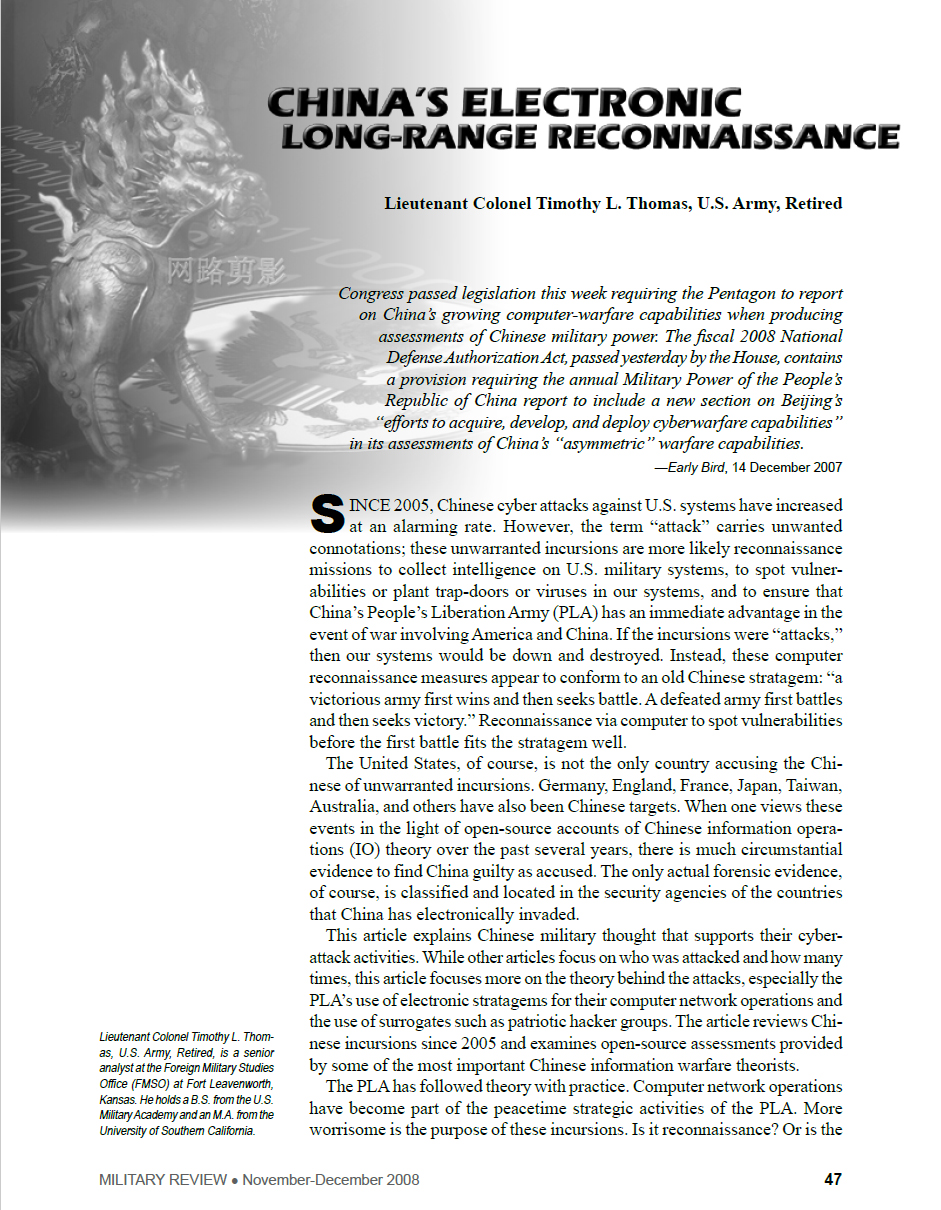
Lieutenant Colonel Timothy L. Thomas U.S. Army Retired
China’s ongoing use of “patriotic hackers” may represent electronic reconnaissance for putting cyber-war theory into practice.
Published in the November-December 2008 Edition of Military Review, p 47.
Download the PDF 
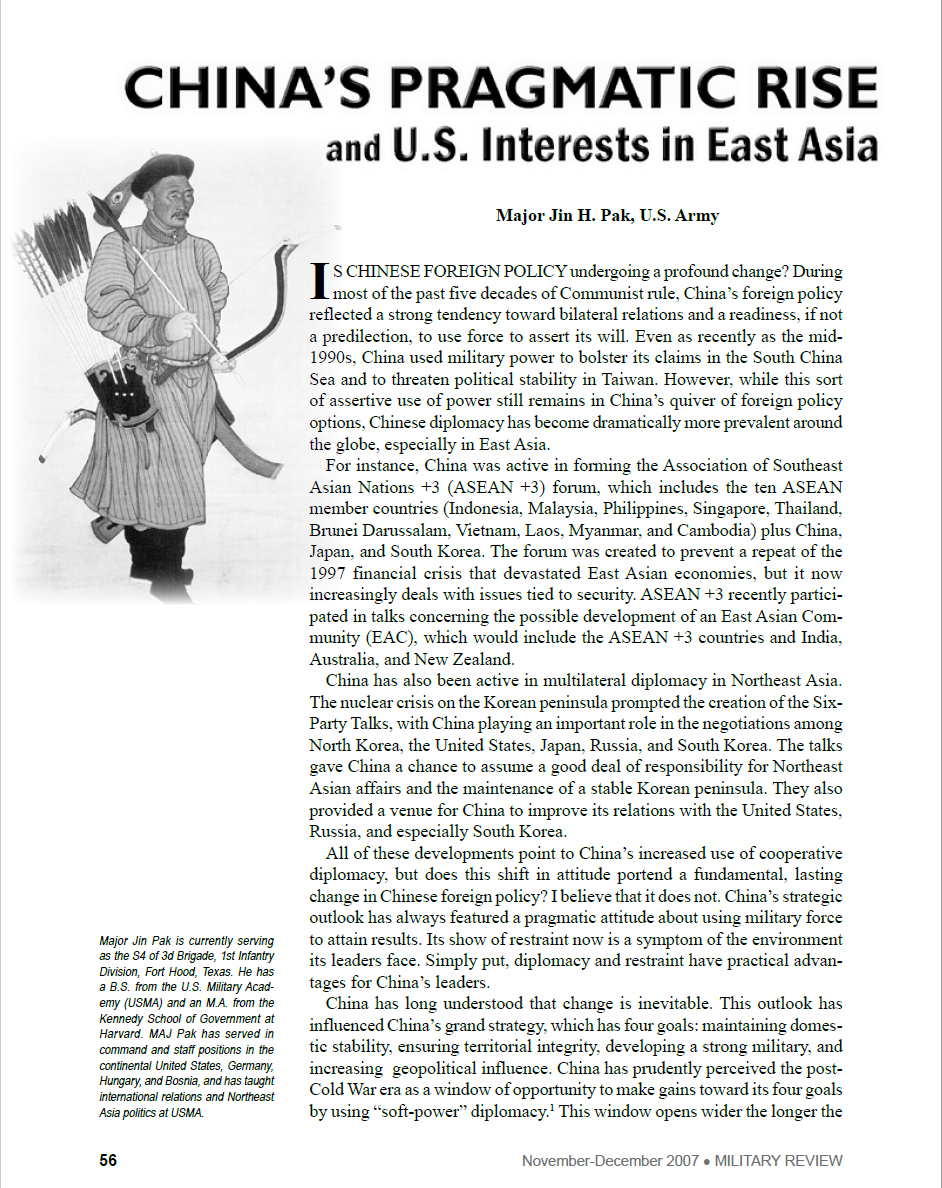
Major Jin H. Pak, U.S. Army
China’s ongoing trade-and-aid charm offensive should be taken for what it is: not a disavowal of force, but a pragmatic ploy to help the nation attain its four strategic objectives.
Published in the November-December 2007 Edition of Military Review, p 66.
Download the PDF 
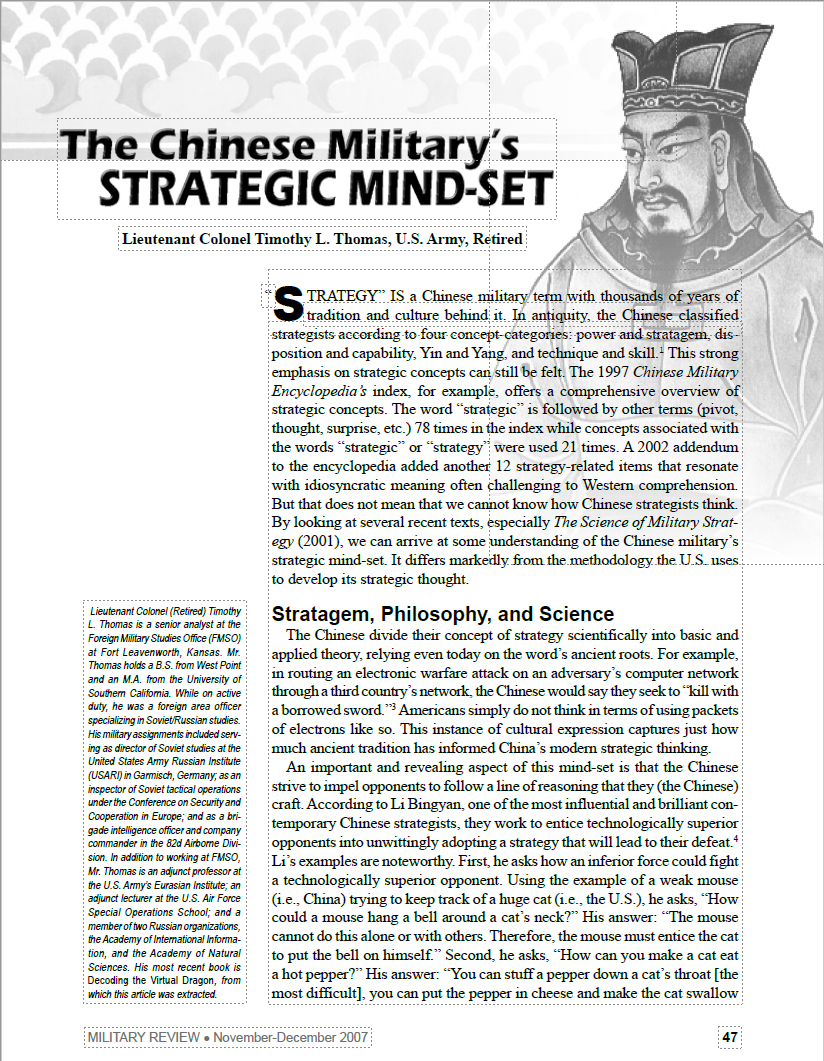
Lieutenant Colonel Timothy L. Thomas, U.S. Army, Retiredd
Based on readings of recent Chinese military literature, an expert offers an illuminating peek into the rising power’s strategic modus operandi.
Published in the November-December 2007 Edition of Military Review, p 47.
Download the PDF 

Lt. Col. Timothy L. Thomas, U.S. Army, Retired
The Chinese believe that superior strategies can help overcome technological deficiencies. A comparable equivalent to this theoretical development in military art would be a Russian virtual operational maneuver group of electron forces, or a US air-land electron battle group.
Published in the May-June 2001 Edition of Military Review, p 47.
Download the PDF 
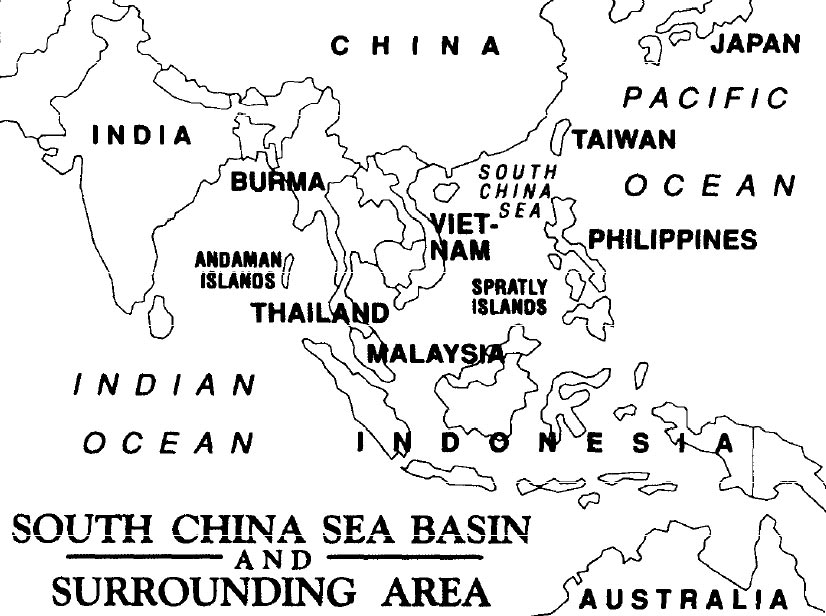
in the South China Sea Basin
Colonel John B. Haseman, US Army
In this strategically important area, during a time of continued tensions, the countries of the region have mken advantage of relative stability and economic prosperity and development to improve the professional character of their own armed forces.
Published in the February 1993 Edition of Military Review, p 55.
Download the PDF 

From The Reporter - Raymond L. Garthoff
This article was reprinted from the original, publiehed in THE REPORTER,19 May 1966, under the title, “A Soviet Critique of China’e ‘Total Strategy.’” Copyrighted © 1966 by The Reporter Magazine Company.
Published in the November 1966 Edition of Military Review, p 12.
Download the PDF 

Southeast Asia
By Niu Sien-Chong
Their political outlook will remain a key factor in the future development of Southeast Asia. Under proper handling, the problem presented by their presence can be solved smoothly and without great difficulty.
Published in the August 1965 Edition of Military Review, p 29.
Download the PDF 
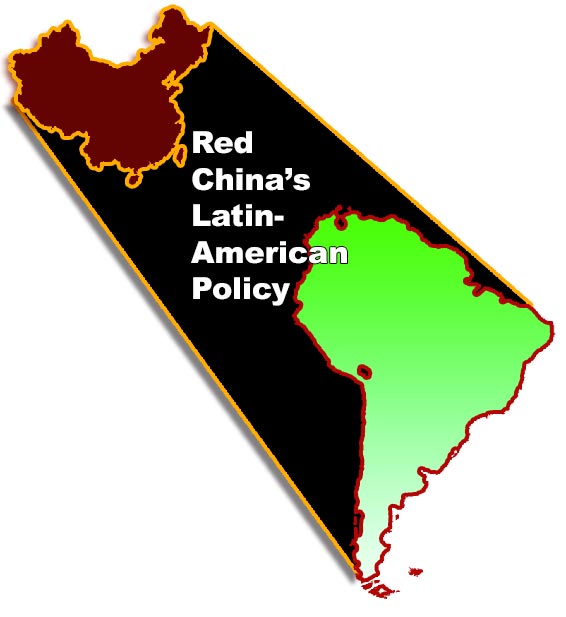
By Joseph J. Lee
The Cuban revolution was a great boon to Peking since—whatever its true relation with Chinese Communist tactics—it could be used to advance the general Maoist formula for Latin America and inaugurate the revolutionary era.
Published in the May 1965 Edition of Military Review, p 47.
Download the PDF 
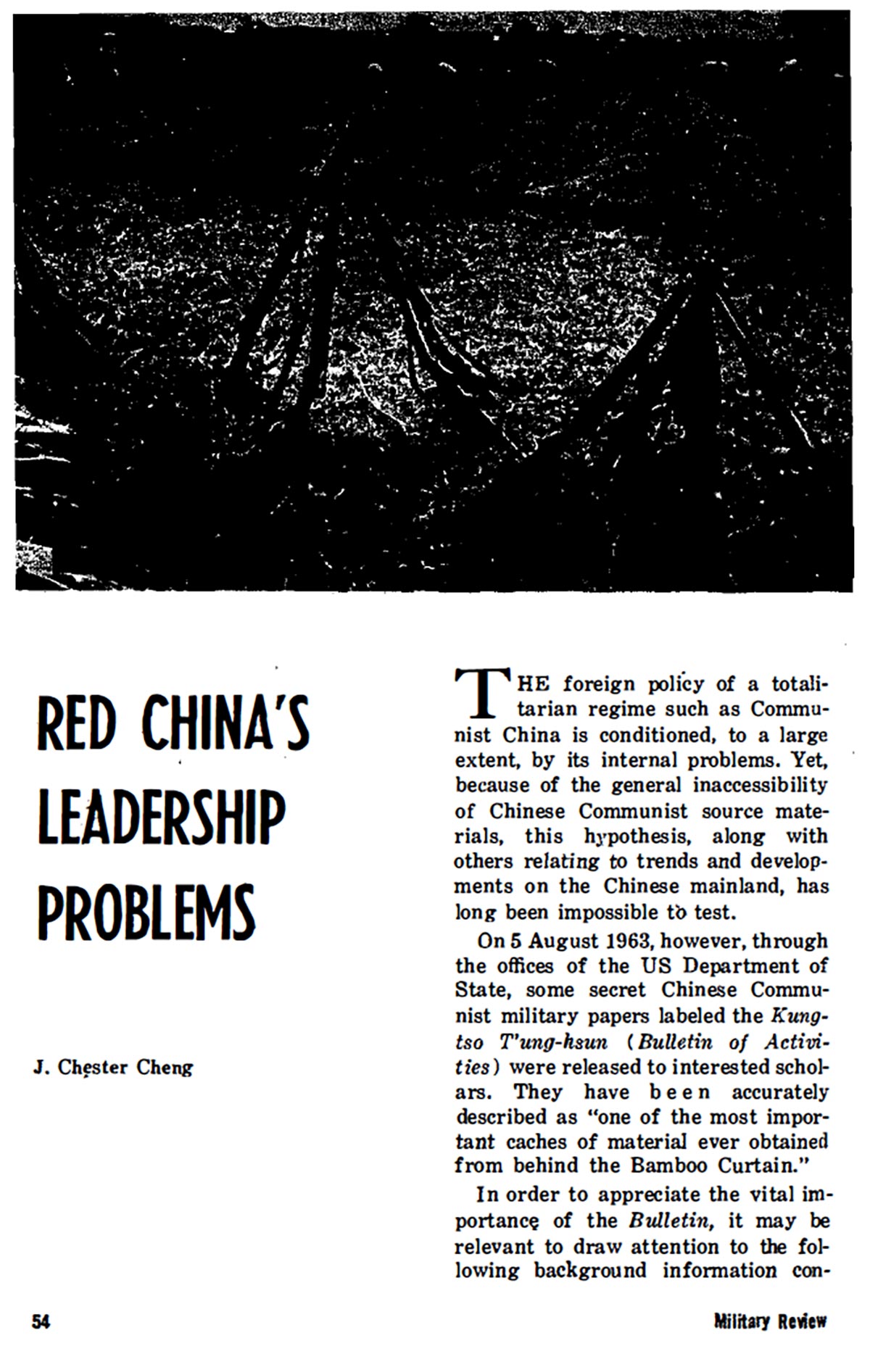
By J.Chfster Cheng
This article was digested from the original, published in ASIAN SURVEY, June 1964, under the title, "Problems of Chinese Communist Leadership as Seen in the Secret Military Papers." ASIAN SURVEY is published monthly by the Institute of International Studies, University of California.
Published in the October 1964 Edition of Military Review, p 54.
Download the PDF 
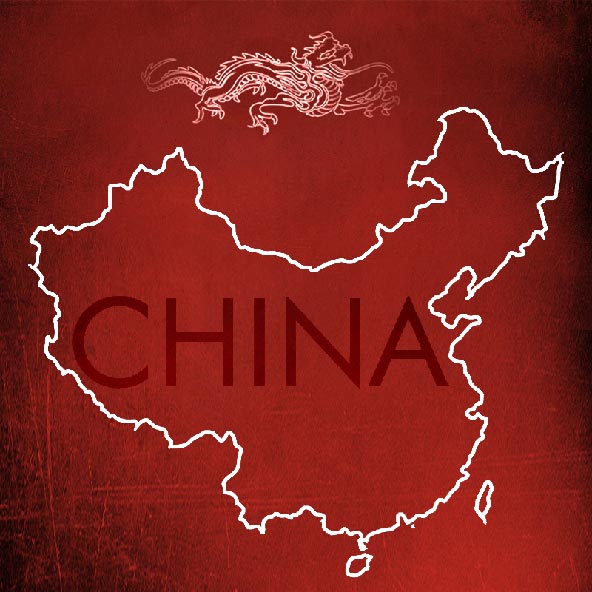
By Major Edgar O'Ballance, Territorial Army, Great Britain
This article was digested from the original, published in the Journal of the United Service Institution of India. April-June 1961, under the title, “The Economic War Potential of the Peoples’ Republic of China” All Rights Reserved by the Journal of the United Service Institution of India.
Published in the September 1962 Edition of Military Review, p 50.
Download the PDF 
Back to Top
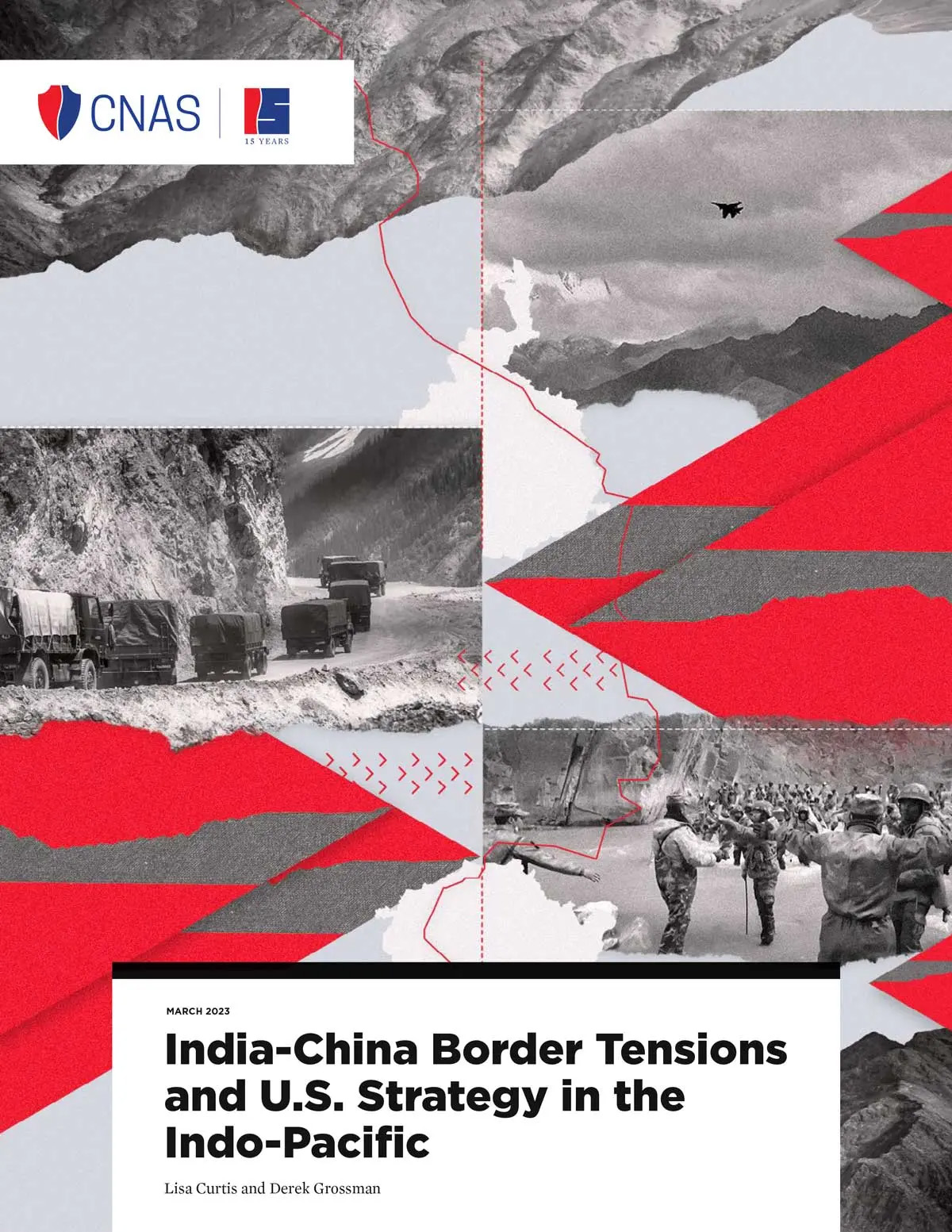
Lisa Curtis and Derek Grossman
India-China border intrusions and clashes have become more frequent in recent years, which periodically threaten to lead to all-out conflict. In an ongoing program that appears to reflect a policy of gradually positioning itself to seize disputed territory along its border with India with a fait accompli as an opportunity presents itself, China has upped the ante in its border disputes through infrastructure development, military deployments, capability enhancements, and periodic efforts to encroach into territory claimed by India. The first deadly border clash between the two countries in 45 years occurred on June 15, 2020, in the Galwan River Valley, where 20 Indian troops and at least four Chinese People’s Liberation Army (PLA) troops were killed. More recently, on December 9, 2022, Chinese and Indian forces clashed along the disputed border in the mountains near Tawang in the northeastern Indian state of Arunachal Pradesh after an estimated 300 Chinese PLA soldiers tried to cross the border. While the Chinese and Indian militaries have since pulled back forces from the most contentious standoff sites where the 2020 buildup occurred and established temporary buffer zones, both sides retain high numbers of troops forward deployed along the disputed frontier, and there are several flashpoints that could erupt into another border crisis at any time. To support its long-term territorial aspirations at the expense of India, China continues to promote contention between India and the other states bordering it on all its sides.
Published March 2023
Download the PDF 
By Gustavo F. Ferreira, Jamie A. Critelli
The US military, intelligence, and diplomatic communities have overlooked a key vulnerability in their assessment of a military conflict between China and Taiwan—Taiwan’s growing reliance on agricultural imports and its food stocks (except for rice) that could endure trade disruptions for only six months. This article assesses Taiwan’s agricultural sector and its ability to feed the country’s population if food imports and production are disrupted by a military conflict with China or a naval blockade imposed by the People’s Liberation Army Navy; identifies the food products that should be prioritized in resupply operations, based on Taiwan's nutritional needs and domestic food production; and outlines the required logistical assets. These findings underscore the urgency for US military planners to develop long-term logistical solutions for this complex strategic issue.
Published April 2023 by United States Army War College Press
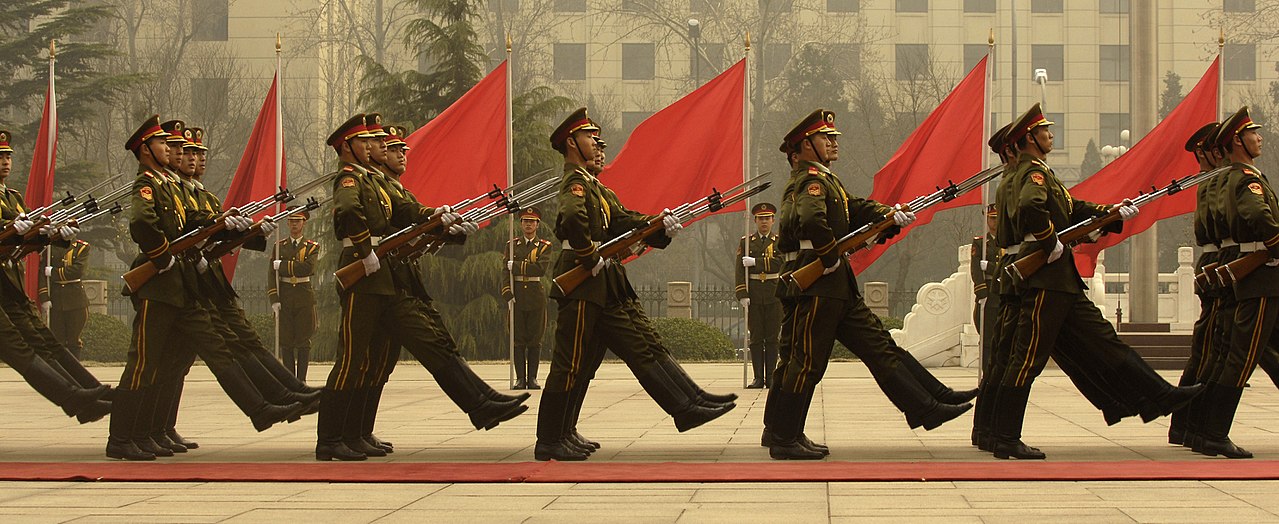
By Alexia Frangopoulos
China’s cyber policy has become partly visible to foreign nations through observation, tracking, and inference. The policy appears to have three vectors... These three aspects—peace activist, espionage activist, and attack planner—dominate China’s cyber policy. Some are always hidden from view while others are demonstrated daily.
Published Semptember 22, 2019 by Harvard Political Review.
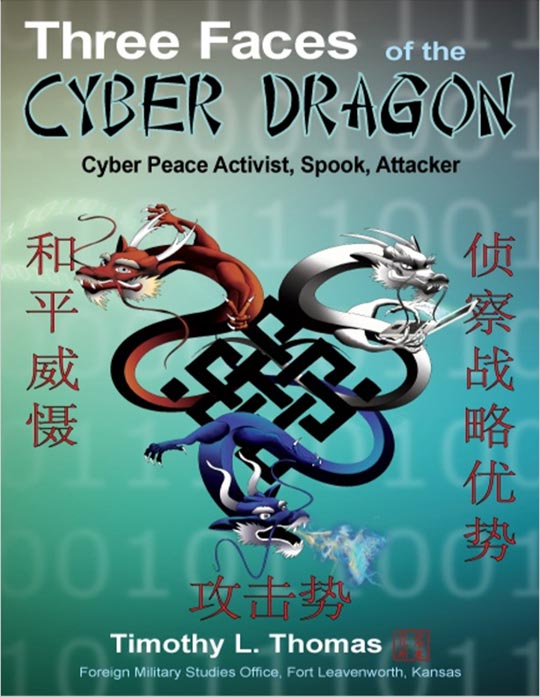
Cyber Peace Activist, Spook, Attacker
By Timothy L. Thomas
China’s cyber policy has become partly visible to foreign nations through observation, tracking, and inference. The policy appears to have three vectors... These three aspects—peace activist, espionage activist, and attack planner—dominate China’s cyber policy. Some are always hidden from view while others are demonstrated daily.
Published in 2012 by Foreign Military Studies Office (FMSO), Fort Leavenworth, Kansas.
Download the PDF 
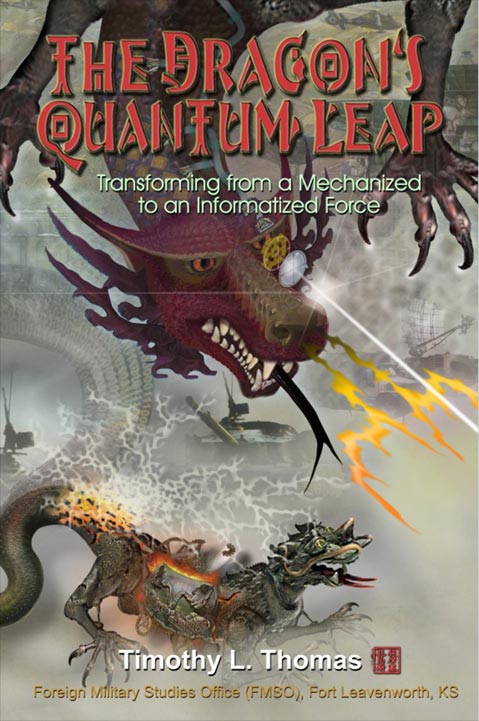
Transforming from a Mechanized to an Informatized Force
By Timothy L. Thomas
Chinese observations of warfare in the information age have resulted in a widespread transformation and metamorphosis of the People’s Liberation Army (PLA) from a mechanized to an informatized force. This transformation has affected nearly every aspect of China’s military from strategy to logistics to educational development. The Dragon’s Quantum Leap intends to peel back the transformation process and uncover the impact of new modes of thought on several key segments of military development (culture, stratagems, crisis management, deception, and reconnaissance among other elements) that digital-age thought is affecting.
Published in 2009 by Foreign Military Studies Office (FMSO), Fort Leavenworth, Kansas.
Download the PDF 
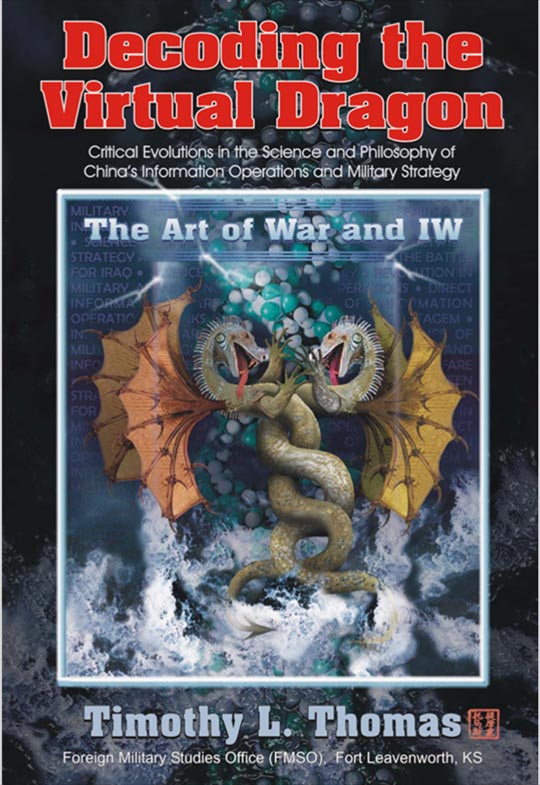
Critical Evolutions in the Science and Philosophy of China's Information Operations and Military Strategy
By Timothy L. Thomas
This book expands upon Dragon Bytes, the author’s earlier work on Chinese information warfare (IW) activities from 1999-2003. Decoding the Virtual Dragon explains how Chinese IW concepts since 2003 fit into the strategic outlook, practices, and activities of the People’s Liberation Army (PLA). The book offers IW explanations directly from the pens of Chinese experts.
Published in 2007 by Foreign Military Studies Office (FMSO), Fort Leavenworth, Kansas.
Download the PDF 
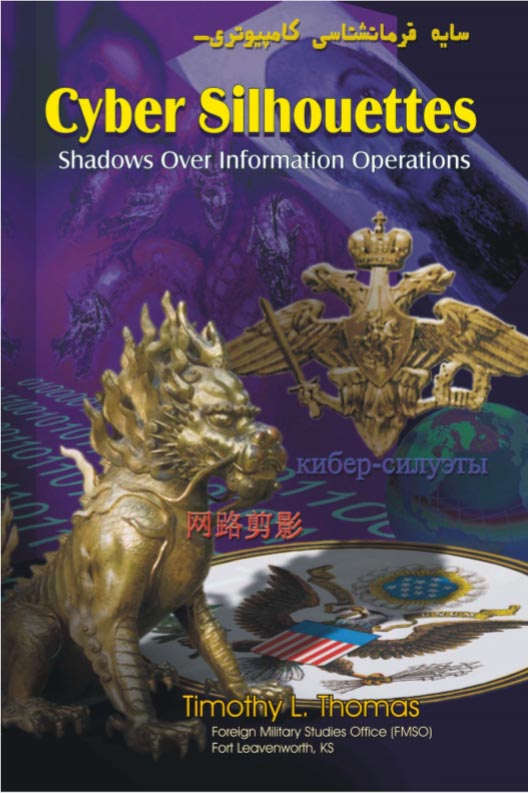
Critical Evolutions in the Science and Philosophy of China's Information Operations and Military Strategy
By Timothy L. Thomas
This book explores the impact of the Cyber Age on military thinking and operations worldwide. Four issues are examined: the contrast between the concept of “cyber operations” used by civilians, including criminals and terrorists, and the concept of “information operations” used by armed forces; the differences in information operations (IO) theory among the US, Russian, and Chinese militaries; the manner in which militaries use information operations in peace and in war; and the impact of cyber and information processes on the mind, the military machine, and their interface.
Published in 2005 by Foreign Military Studies Office (FMSO), Fort Leavenworth, Kansas.
Download the PDF 